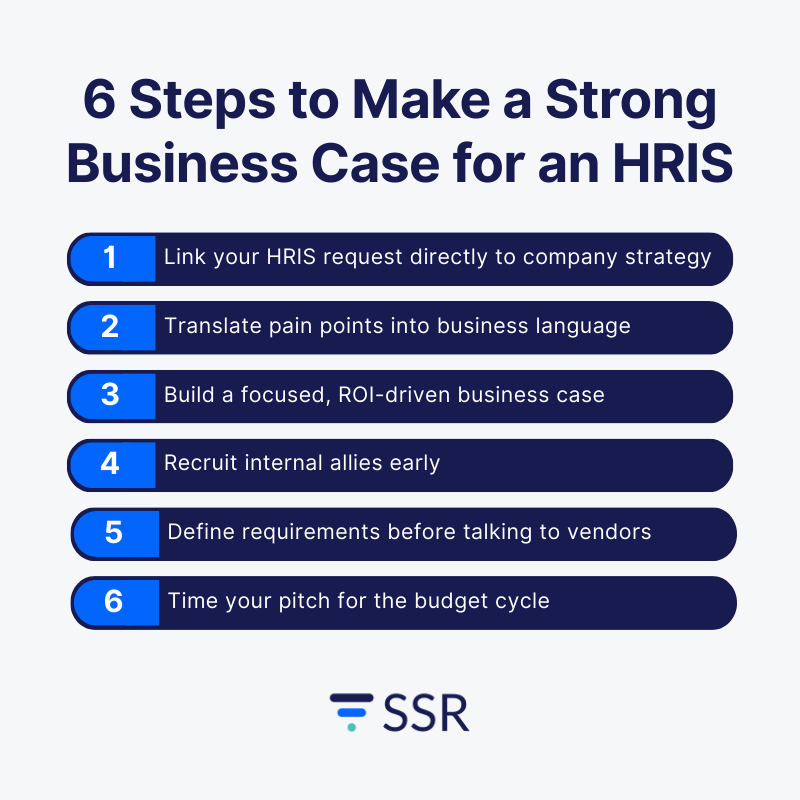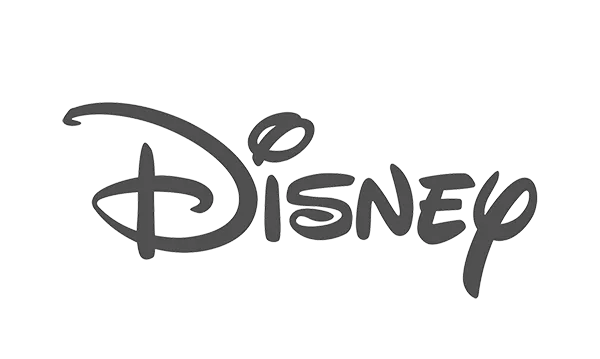To make a business case for a new HRIS, link your request to business strategy, translate HR pain points into dollars and risk, build a short ROI-driven pitch, get internal allies early, lead with requirements before vendors, and time your proposal for the budget cycle.
Why it works: This approach reframes the conversation from “HR wants software” to “the business can’t hit its goals without this investment.”
Your Business Case for HR Software Needs More Than a Feature List
You can’t walk into a CFO’s office and say, “Our HRIS is old. We need a new one.” That’s a fast track to a polite no.
What works is what the two invited speakers in our recent SSR Webinar have done dozens of times:
- Jeff Waldman is the founder of ScaleHR. He has over 25 years of experience across HR, recruiting, and work tech, and has helped organizations globally align technology with talent strategy.
- Robert St-Jacques is a global HR executive, lawyer, and HR tech advisor with over 30 years of experience. He’s led more than 42 HRIS and HR tech implementations worldwide.
Here’s their recommended 6-step framework for building a business case for a new HRIS that leadership can’t say no to.

Step 1. Link Your HRIS Request Directly to Company Strategy
One of the greatest mistakes HR leaders make is pitching a system upgrade purely in HR terms. Leadership cares about business outcomes – think revenue growth, efficiency gains, and risk management. The business case for your new HRIS system, therefore, has to be framed in that same context.
Jeff Waldman emphasizes that if leadership expects HR to deliver on strategic goals, they must also provide the systems and tools that make those goals achievable. Without the right infrastructure, even the most well-designed HR strategy cannot produce the expected results.
As Jeff puts it:
“If a business asks you to do A, B, and C... and then says, ‘Well, no’ to the tools you need, you can respond, ‘Then I can’t do A, B, and C.’”
Before any vendor research, revisit your organization’s business plan.
Are you scaling into new markets? Containing costs? Improving customer retention? Then, connect your HR strategy to those objectives.
For example:
- If the company is targeting rapid growth, explain how the current HRIS slows down onboarding or hiring.
- If cost control is the priority, show how automating manual processes could free up dozens of staff hours each month.
When you tie the HRIS investment to their priorities, you shift the discussion from “HR wants a new tool” to “this is essential for achieving company goals.”
Step 2. Translate Pain Points Into Business Language
Simply saying that onboarding is manual or the HR workflow is clunky isn’t enough. As Robert advises, you need to speak in terms the C-suite understands:
“Executives think in terms of dollars, risk, and opportunity. If you can’t show them how an HR problem connects to those three things, they won’t see it as a priority.”
He suggests considering these angles when quantifying the impact:
- Lost revenue from slow hiring: Calculate cost of vacancies using average revenue per employee.
- Turnover risk: Estimate financial impact from poor employee experience.
- Compliance exposure: Highlight potential fines or legal risks from reporting errors.
He also offered a practical example:
“If you’re taking 75 days to fill a position and your competitors are doing it in 45, you’re losing productivity. That gap can cost enough on its own to justify a new system.”
Step 3. Build a Focused, ROI-Driven Business Case
In the past, HR tech proposals could be as lengthy as 50 pages. Nowadays, leaders prefer concise, structured presentations supported by data. Robert points out:
“Executives don’t have time for a fifty-page business case anymore. Ten clear slides with the problem, the strategic impact, the ROI, and the risks. That’s what gets read and remembered.”

Logically, your business case should be adapted. And according to the expert, the following structure can help do the trick.
- Problem statement: What’s broken, and why does it matter now?
- Strategic relevance: How it impacts core business goals.
- Current state analysis: The operational cost of the status quo.
- Proposed solution: The type of system needed (not just vendor names yet).
- ROI model: Time savings, cost reductions, improved accuracy, and avoided risks.
- Risk and mitigation: Address the fear of change directly.
To illustrate ROI, Robert offers this calculation:
“One position, 500 résumés – that’s about 21 hours at two and a half minutes each. With the right ATS, you can get that down to one hour. That’s 20 hours saved for one manager, on one role. Multiply that by your annual hiring, and the numbers speak for themselves.”
Step 4. Recruit Internal Allies Early
You don’t have to build the business case alone. In fact, it’s more persuasive when finance, IT, and operations are already on board. Jeff Waldman advises:
“Find the person in your organization who has that analytical mind. Buy them dinner and have them help you build the business case.”
Finance can help validate your ROI calculations, IT can address integration feasibility, and operations can highlight cross-departmental impact. Bringing these voices in early also reduces the risk of your proposal being derailed later by “we weren’t consulted” pushback.
Step 5. Define Requirements Before Talking to Vendors
One pitfall the experts shared they often see is when teams focus on vendor demos rather than clearly defining the HRIS's essential features for their business.
Answering the question, “What’s a better system?”, Robert advises to first map out business needs and pain points to system features.
“It depends on who you are. Start with your needs, not with a shiny demo. Map your pain points to the functions you actually require, and you’ll save yourself a lot of wasted time.”
Particularly, it’s recommended to begin by mapping your pain points to functional requirements, such as:
- Integration with payroll and benefits platforms
- Automated compliance reporting
- Global capabilities for international HR
- Employee self-service for common tasks.
Next, you’d want to draft an RFP and compile a shortlist of vendors capable of fulfilling those requirements. When speaking to vendor references, Robert recommends “tell them your pain points first,” as he notes, “They’ll be brutally honest about the hiccups and how they fixed them.” He also suggests arranging demos in close succession, ideally within a week, so comparisons remain fresh and unbiased.
Step 6. Time Your Pitch for the Budget Cycle
The harsh truth is that even the strongest argument can be dismissed if presented at the wrong moment. Jeff Waldman warns:
“Most companies start their budget planning in late summer or early fall. If you wait until May to bring your case forward, you’ve probably missed your window.”

Tailor your emphasis based on your organization’s current focus. If growth is the priority, highlight scalability. If cost-cutting is the goal, emphasize efficiency and time savings.
Jeff also recommends framing the decision in terms of risk:
“Ask leadership which risk is greater: doing nothing, or making the change. When you put it that way, it forces them to think about the long-term cost of standing still.”
Key Takeaways
By:
- Start with strategy, not software
- Quantify pain points in dollars, time, and risk
- Keep your pitch short and ROI-driven
- Bring allies in early
- Lead with requirements, not demos
- Pitch at the right time
You’ll give leadership every reason to approve the investment. As Robert summed it up: “You don’t rise to the level of your motivation — you fall to the level of your systems.”
FAQ
Q: How long should my HRIS business case be?
A: Aim for a 10-slide deck or 3 - 4 page brief. Leadership cares about clarity and numbers, not volume.
Q: What’s the fastest way to calculate HRIS ROI?
A: Start with time savings for high-volume tasks (like resume screening or onboarding) x number of occurrences x average hourly rate of those doing the task.
Q: Should I get vendor quotes before building the case?
A: Only after you’ve nailed down requirements and pain points. Otherwise, you risk chasing “shiny objects” that don’t solve your problems.
Watch the Full Webinar
Want to hear these strategies straight from the experts? Watch the complete session with Jeff Waldman and Robert St-Jacques here.



%20%5BNEW%5D%20(10).png)







%20%5BNEW%5D%20(13).png)
%20%5BNEW%5D%20(10).png)
%20%5BNEW%5D%20(6).png)










